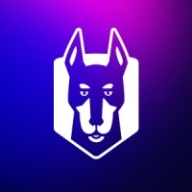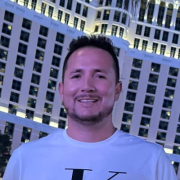

Red Hat Advanced Cluster Security and Snyk are both pivotal in the Kubernetes security space. Red Hat appears to have an upper hand in pricing and customer support, while Snyk distinguishes itself with its feature-rich offering and perceived value.
Features: Red Hat Advanced Cluster Security offers Kubernetes-native security, runtime threat detection, and vulnerability management. Snyk provides an extensive vulnerability database, seamless CI/CD integration, and a diverse set of developer-focused tools.
Room for Improvement: Red Hat could enhance its CI/CD integration and broaden its security feature set to be more developer-friendly. Snyk could improve its pricing models, customer support in non-developer environments, and Kubernetes-specific capabilities.
Ease of Deployment and Customer Service: Red Hat integrates seamlessly within OpenShift and Kubernetes, streamlining deployment. Snyk offers easy integration into CI/CD workflows, with positive feedback for its customer service, focused on developers' needs.
Pricing and ROI: Red Hat offers competitive pricing with favorable ROI perceptions. Snyk's higher initial costs are counterbalanced by its valuable vulnerability management, appealing to those seeking extensive security features.
| Product | Market Share (%) |
|---|---|
| Snyk | 5.2% |
| Red Hat Advanced Cluster Security for Kubernetes | 2.2% |
| Other | 92.6% |


| Company Size | Count |
|---|---|
| Small Business | 6 |
| Midsize Enterprise | 2 |
| Large Enterprise | 4 |
| Company Size | Count |
|---|---|
| Small Business | 20 |
| Midsize Enterprise | 9 |
| Large Enterprise | 21 |
Red Hat Advanced Cluster Security for Kubernetes is a Kubernetes-native container security solution that enables your organization to more securely build, deploy, and run cloud-native applications from anywhere. With its built-in security across the entire software development life cycle, you can lower your operational costs, reduce operational risk, and increase developer productivity while improving your security posture immediately. In addition, Red Hat Advanced Cluster Security integrates with security tools and DevOps in an effort to help you mitigate threats and enforce security policies that minimize operational risk to your applications. It also enables you to provide developers with actionable, context-rich guidelines integrated into existing workflows, along with tooling to support developer productivity. The solution is suitable for small, medium, and large-sized companies.
Red Hat Advanced Cluster Security for Kubernetes Features
Red Hat Advanced Cluster Security for Kubernetes has many valuable key features. Some of the most useful ones include:
Red Hat Advanced Cluster Security for Kubernetes Benefits
There are many benefits to implementing Red Hat Advanced Cluster Security for Kubernetes. Some of the biggest advantages the solution offers include:
Reviews from Real Users
PeerSpot user Igor K., Owner/Full Stack Software Engineer at Maraphonic, Inc., says, “The solution allows teams to create their own virtual spaces and share resources. The most valuable feature is the ability to share resources.”
Snyk's AI Trust Platform empowers developers to innovate securely in AI-driven environments, ensuring rapid and secure software development with enhanced policy governance.
Snyk’s platform integrates AI-ready engines across the software development lifecycle, offering broad coverage with high speed and accuracy essential for fast-paced coding environments. AI-driven features include visibility, prioritization, and tailored security policies that enable proactive threat prevention and quick remediation. By focusing on LLM engineering and AI code analysis, Snyk supports secure and productive development processes. The platform's partnerships, including GenAI code assistants, enhance AI application security by addressing new threats and code velocity challenges.
What are the key features of Snyk?Snyk is implemented across industries focusing on agile development and DevSecOps, enhancing software delivery speed and security. It is widely used for continuous monitoring and adherence to security and licensing standards, especially in environments relying on Docker image security and CI/CD pipeline integration.
We monitor all Container Security reviews to prevent fraudulent reviews and keep review quality high. We do not post reviews by company employees or direct competitors. We validate each review for authenticity via cross-reference with LinkedIn, and personal follow-up with the reviewer when necessary.